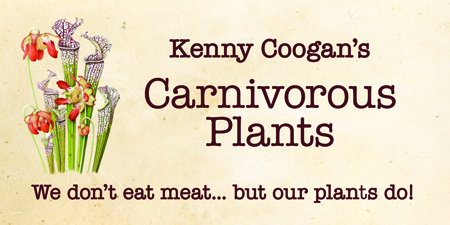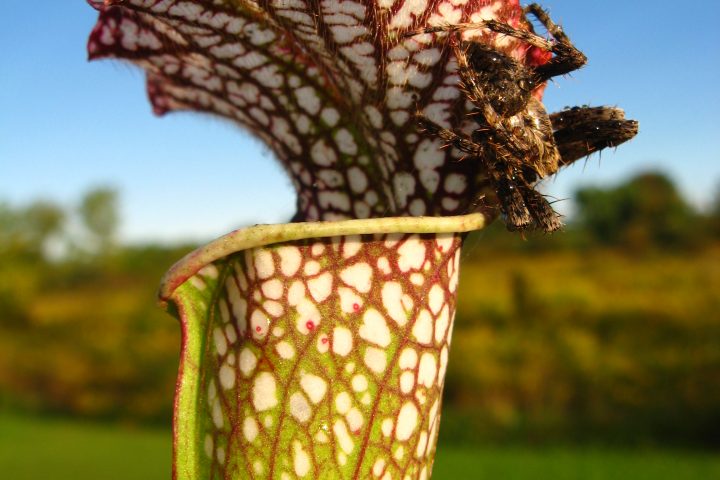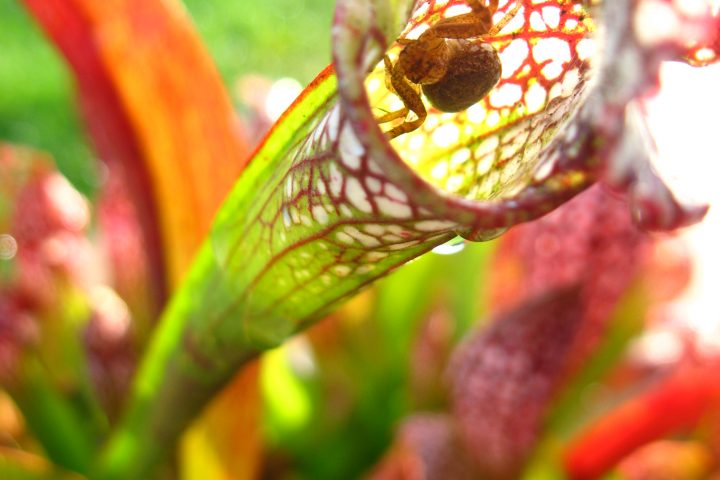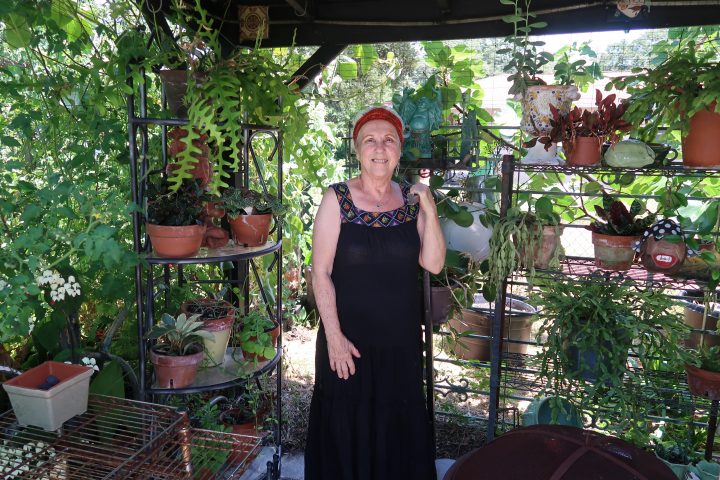To most, gardening is about the aesthetic, the appeal to the eye, but what about if all your gardening had a purpose? Creating a real homestead garden. Using every inch of your garden and landscape to create something sustainable and practical.
Recently I picked up the Bill Nye book, “Unstoppable: Harnessing Science to Change the World.” The science guru suggests that in order to be long term residences on this planet we need to start making small, impactful changes to our daily life. Using different forms of energy, like solar panels, growing our own food, were some of his suggestions.
Edibles in the Landscape
Three years ago when I purchased my one-acre homestead, I was not given a blank canvas. The yard had over 20 large oak trees, a pool, and grass. The grass was a mix of invasive species and the medium- to high-maintenance grass, St. Augustine. Lawns, made out of grass, are good choices for children and dogs to play on, high foot traffic areas, swales and a place for the occasional vehicle to park on. However, if your lawn area doesn’t serve a purpose, you should consider a lower maintenance groundcover instead. Asiatic jasmine, perennial peanut, beach sunflower, sunshine mimosa, ornamental sweet potato vine or mulch are all great alternatives to a water guzzling, fertilizer demanding grass yard. My front yard is still a mix of grasses but my backyard now has mulched pathways with edible and ornamental plants in loosely defined beds surrounding the two dozen large oaks.
To me, who wanted to garden purposefully everywhere in my yard, the oaks presented a few problems. I want to grow large amounts of tropical fruits and seasonal vegetables. Since the oaks shaded much of my yard I focused on plants that could handle moderate amounts of shade. After some experimenting I discovered that many vegetables do quite well with some shade, here in the sizzling sunshine state.
I understand that the oaks are purposeful. They provide much needed shade in the summer and leaves, which are composted, in the fall and winter. Their roots also help with soil erosion on my steep incline of a homestead. To make them more useful I planted various edibles at their base. Now passionfruits, luffas and gourds scramble up their trunks to reach the sun. Visitors are quite impressed when they see oak trees ‘producing’ fruits.
In addition to my seasonal vegetable garden, I have interplanted edible plants between the oaks. Edibles that I keep as shrubs include; katuk (Sauropus androgynus), cranberry hibsiscus (Hibiscus acetosella), moringa (Moringa oleifera) and Chaya (Cnidoscolus aconitifolius). I also have some specimen fruit trees such as jackfruit (Artocarpus heterophyllus), miracle fruit (Synsepalum dulcificum), white sapote (Casimiroa edulis) and loquat (Eriobotrya japonica).
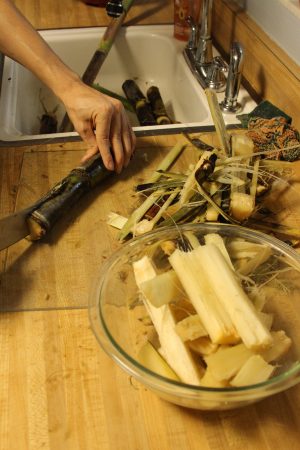
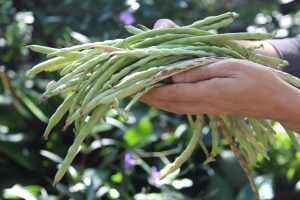
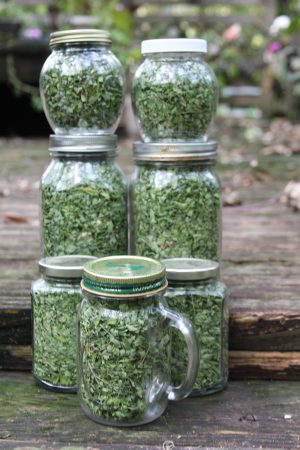
Attracting pollinators
To increase my yields, I encourage various forms of pollinators. After a pair of screech owls raised two owlets, honey bees moved into the next box. On hot days, the hive, which is 15 feet off the ground is covered in the pollinators cooling their hive by flapping their delicate wings.
In addition to being attractive, the passionfruit vines, who have a very small foot print, attract bees and butterflies. Rather than having one designated butterfly garden, milkweeds are dispersed haphazardly throughout the yard to promote the flow of pollinators.
Currently I am growing two varieties of luffa. Luffa acutangular, which blooms during the night and Luffa aegyptiaca, which blooms during the day, attract different pollinators such as butterflies and moths. When harvested, the luffas are used to scrub chicken food bowls, bird baths, and plant pots.
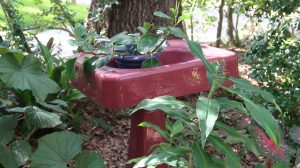
To increase the purposefulness of the yard, I am slowly replacing pure ornamentals with specimens that can be both useful for human use, beyond aesthetically pleasing, and attractive to pollinators. Natives such as beautyberry (Callicarpa americana) are attractive, feed wildlife and can also be used to make a palatable jelly.
Pinecone ginger or shampoo ginger (Zingiber zerumbet) is also scattered throughout my homestead. I can definitely make space for a plant that is colorful, vigorous and used as a natural soap/shampoo in my yard.
Composting
Close to one of my banana circles is a good-sized compost bin easily made from four pallets. Garden scraps are recycled there and feed the bananas. When the leftovers have decomposed to fine rich compost they are returned to the very gardens they originated from. By actively composting, we are encouraging nature’s natural way of recycling.
In addition to my pallet compost bin, I have a smaller plastic bin near another vegetable garden and a brush pile in the far back discrete corner of my yard. The brush pile is more of a passive compost area, where large branches and logs provide homes for native wildlife including reptiles and birds.
Since the backyard comprises of mulched pathways and stepping stones, there is no need to rack the oak leaves as they fall. The leaves provide nutrients to the plants and impede weed growth. Mowing over the leaves will break them apart and allow decomposition to happen quicker.
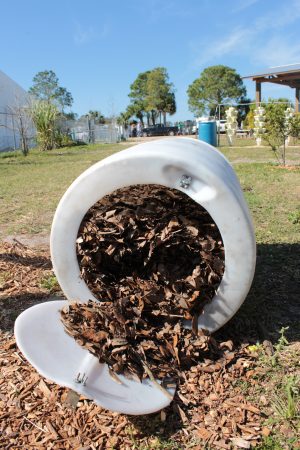
Raising animals
As a person who is childless by choice, I do not have the joy of raking leaves into giant piles for a child to easily destroy by jumping and running through. Instead, I happily have a flock of domestic ducks and chickens to patrol my yard for pests and yes, play in the leaves. The backyard poultry eat leaf-destroying slugs and harmful beetles. All of which is done chemically free. As an added bonus, the birds provide a great number of eggs weekly, which I do not see human children contributing.
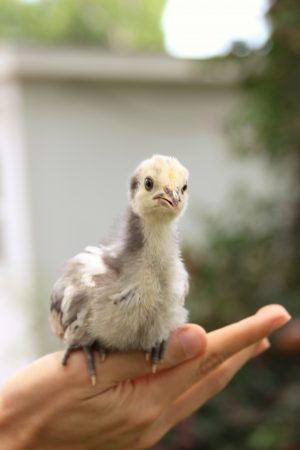
Sustainable features
Incorporating sustainable features into the design such as rain gardens, bioswales, and ways to harvest rainwater is a must if you want every inch of your yard to be purposeful. A rain garden is a low section of the landscape planted with purposeful plants that like to get their “feet” wet. The garden collects rainwater, giving it a chance to “strain” out impurities before draining into the aquifer.
Due to my yard being at such an incline, I have four cypress trees planted at the bottom of my property where an ephemeral pond occurs during the rainy season. This seasonal pond is surrounded by edibles including watercress, water chestnuts and various types of bananas. Acording to IFAS good flowering plants for rain gardens include blue flag iris, goldenrod, swamp sunflower, spider lily, and milkweed. Many of these are native and will attract butterflies and other wildlife.
Bioswales, which are often seen in parking lots, reduces runoff water and increases groundwater recharge. In addition to bucketing water from the ephemeral pond to water my vegetables I also use a half dozen rain barrels. Unfortunately, these barrels are filled within a day or two of heavy August rains and are used quickly when the rains stop in the fall. In-ground cisterns may be a better option for those who truly want to be sustainable as Florida presents two opposing seasons: dry and flooding.
How do you utilize every inch of your garden? Send me a message to share your ideas. We would love to hear from you.
To learn more about homesteading, check out my newest book: 99½ Homesteading Poems
 Originally published in Florida Gardening Magazine Winter 2017.
Originally published in Florida Gardening Magazine Winter 2017.
